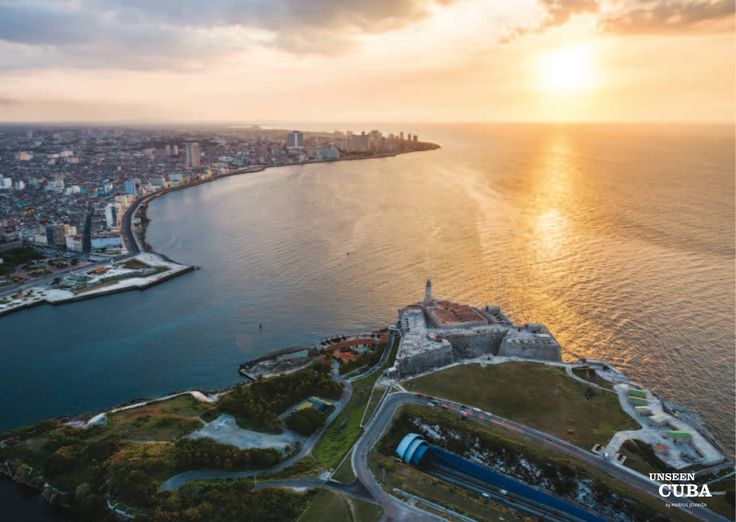VALLE DE VIÑALES, PINAR DEL RIO, UNO DE LOS MÁS BELLOS PAISAJES NATURALES DE LA ISLA. PHOTOS.
El Valle de Vinales está ubicado en la provincia de Pinar del Río, zona más occidental de Cuba, en la Sierra de los Órganos, exactamente en el grupo montañoso de la Cordillera de Guaniguanico. Este Valle y gran parte de la sierra que lo rodea fue aprobado en 1999 como Parque Nacional y, en diciembre de ese mismo año, fue declarado por la UNESCO Patrimonio de la Humanidad, en la categoría de Paisaje Cultural. Posee además la condición de Monumento Nacional, que recibiera por Resolución el 27 de marzo de 1979.
EL VALLE DE VIÑALES es una de las áreas más conocidas y atractivas de Cuba, presenta un escenario excepcional, que, entre otras, lo caracteriza la fusión de su espectacular belleza natural, conservación del medio ambiente, la armónica acción del hombre en el cultivo de frutos menores, forraje y esencialmente el cultivo del tabaco, cuyos métodos tradicionales de cultivo y producción, logran el reconocimiento universal del habano como uno de los de mejor calidad del mundo.
También existen en el Valle construcciones con patrones indígenas como la llamada casa de tabaco, el conocido vara en tierra y el típico bohío cubano que al integrarse a sus valores naturales, mogotes, diferencias del relieve, contraste entre el rojo de los suelos y el verde de los cultivos conforman un valor estético y socio- cultural excepcional, todo este conjunto fundamenta el criterio de Paisaje Cultural en evolución donde se evidencia su actividad social vinculada al modo de vida con un proceso evolutivo y al mismo tiempo, muestra significativas evidencias materiales de esta evolución en el tiempo.
Se encuentra en el municipio de Viñales, uno de los 14 con los que cuenta la provincia, ubicado en el centro y norte de este territorio. Al este limita con los municipios de La Palma y Consolación del Sur, al sureste. Al oeste con el municipio Minas de Matahambre y al sur con el municipio de Pinar del Río. Al norte coincide con las aguas del Golfo de México y el Estrecho de la Florida. Su territorio cubre una superficie de 741 kilómetros cuadrados.
Existen unas formaciones montañosas, únicas en la Isla, llamadas mogotes. Estos mogotes constituyen formaciones geomorfológicas muy singulares, de gran diversidad de formas, que llegan a medir, en algunos casos, centenares de metros de altura. Sólo son comparables con las localizadas en China y la Península de Malaca.
En el valle existen otras elevaciones, como Alturas de Pizarras, las cuales están constituidas por una variedad de rocas, las más antiguas existentes a lo largo del país y también en el área caribeña.
MURAL DE LA PREHISTORIA…
En el valle de Dos Hermanas, podemos encontrar el Mural de la Prehistoria, pintado sobre el mogote llamado Pita. Este mural muestra la evolución de la vida en sentido natural en Cuba. Se puede encontrar en una ladera perpendicular, que se limpió antes para poder realizar este trabajo. La roca fue lavada y se hicieron drenajes en ella para evitar, en un futuro, la erosión a causa de la lluvia. Se extiende a largo del Valle por 120 y los 160 metros de longitud. Su autor fue Leovigildo González Morillo, ya fallecido, quien fuera Director de Cartografía de la Academia de Ciencias de Cuba. En él están representados indios Guanahatabeyes, especies de Mamíferos, animales gigantescos, así como algunos Moluscos.
En el Mural de la Prehistoria se puede ver, en 12 piezas, el proceso evolutivo de los hombres y de los animales en la Sierra de los Órganos, en sus distintas etapas. Como rasgo peculiar tenemos que, pintar o retocar la pintura ya existente en él, implica un proceso complicado y riesgoso que toma 5 años en concluir; se pinta totalmente a pincel.
CUEVAS EN EL VALLE DE VIÑALES…
En el Valle se pueden encontrar varias cuevas, muy significativas en cuanto a forma y originalidad, como la de “José Miguel” y la del “Indio”. La última es una caverna, que llega a alcanzar los 300 metros de extensión, en cuyo interior corren 2 ríos subterráneos. También está la denominada “La reina de las espeluncas”, la Gran Caverna de Santo Tomás, caracterizada y topografiada por el Dr. Antonio Núñez Jiménez, y es mucho mayor, pero no tan accesible y tal vez no tan atractiva para el público en general.
En la Cueva del Indio, además de las diversas formas y figuras formadas por las estalactitas y estalagmitas, se han encontrado pinturas y restos de los utensilios y entierros de las culturas cubanas precolombinas. Sin embargo, para quienes la visitan, lo que resulta sumamente atrayente es el recorrido en bote por el Río San Vicente, que por ella corre.
Esta cueva se encuentra próxima a la carretera de Viñales a San Cayetano. A unos cinco y medio kilómetros de la ciudad de Viñales, antes de llegar a San Vicente.
El valle fue aprobado como el primer geoparque de Cuba, el jueves 4 de noviembre de 2021.
VIÑALES VALLEY, PINAR DEL RIO, IS ONE OF THE MOST BEAUTIFUL NATURAL LANDSCAPES ON THE ISLAND. PHOTOS.
The Vinales Valley is located in the province of Pinar del Río, the westernmost area of Cuba, in the Sierra de los Órganos, exactly in the mountain range of the Guaniguanico Mountain Range. This Valley and a large part of the mountains that surround it were approved in 1999 as a National Park and, in December of that same year, it was declared a World Heritage Site by UNESCO, in the Cultural Landscape category. It also has the status of a National Monument, which it received by Resolution on March 27, 1979.
THE VIÑALES VALLEY is one of the best-known and most attractive areas of Cuba, it presents an exceptional setting, which, among others, is characterized by the fusion of its spectacular natural beauty, environmental conservation, the harmonious action of man in the cultivation of minor fruits, fodder and essentially the cultivation of tobacco, whose traditional methods of cultivation and production, achieve universal recognition of the cigar as one of the best quality in the world.
There are also constructions in the Valley with indigenous patterns such as the so-called tobacco house, the well-known stick on the ground, and the typical Cuban bohío that, when integrated into its natural values, mogotes, differences in relief, the contrast between the red of the soils and the green of the crops make up an exceptional aesthetic and socio-cultural value, all these set bases the criterion of Cultural Landscape in evolution where its social activity linked to the way of life with an evolutionary process is evident and at the same time, it shows significant material evidence of this evolution in time.
It is located in the municipality of Viñales, one of the 14 that the province has, located in the center and north of this territory. To the east it limits with the municipalities of La Palma and Consolación del Sur, to the southeast. To the west with the municipality of Minas de Matahambre and to the south with the municipality of Pinar del Río. To the north, it coincides with the waters of the Gulf of Mexico and the Straits of Florida. Its territory covers an area of 741 square kilometers.
There are some mountainous formations, unique on the Island, called mogotes. These mogotes constitute very singular geomorphological formations, of the great diversity of forms, which measure, in some cases, hundreds of meters high. They are only comparable with those located in China and the Malacca Peninsula.
In the valley, there are other elevations, such as Alturas de Pizarras, which are made up of a variety of rocks, the oldest existing throughout the country and also in the Caribbean area.
MURAL OF PREHISTORY…
In the valley of Dos Hermanas, we can find the Mural of Prehistory, painted on the mogote called Pita. This mural shows the evolution of life in a natural sense in Cuba. It can be found on a perpendicular slope, which was cleared earlier in order to perform this job. The rock was washed and drains were made in it to prevent erosion due to rain in the future. It extends along the Valley for 120 and 160 meters in length. Its author was Leovigildo González Morillo, now deceased, who was the Director of Cartography of the Cuban Academy of Sciences. In it are represented Guanahatabeyes Indians, species of Mammals, gigantic animals, as well as some Mollusks.
In the Mural of Prehistory, you can see, in 12 pieces, the evolutionary process of men and animals in the Sierra de Los Órganos, in its different stages. As a peculiar feature we have to paint or retouch the existing paint on it, which implies a complicated and risky process that takes 5 years to complete; It is completely painted by brush.
CAVES IN THE VIÑALES VALLEY…
In the Valley, you can find several caves, very significant in terms of shape and originality, such as “José Miguel” and “Indio”. The last one is a cavern, which can reach 300 meters in length, inside which 2 underground rivers run. There is also the so-called “La Reina de las espeluncas”, the Great Cave of Santo Tomás, characterized and topographed by Dr. Antonio Núñez Jiménez, and it is much larger, but not as accessible and perhaps not as attractive to the general public. .
In the Cueva del Indio, in addition to the various shapes and figures formed by the stalactites and stalagmites, paintings and remains of utensils and burials of pre-Columbian Cuban cultures have been found. However, for those who visit it, what is extremely attractive is the boat tour of the San Vicente River, which runs through it.
This cave is located near the road from Viñales to San Cayetano. About five and a half kilometers from the city of Viñales, before reaching San Vicente.
The valley was approved as the first geopark in Cuba, on Thursday, November 4, 2021.
Agencies/ Wiki/ Ecured/ ValleViñalesHist./ Extractos/ Excerpts/ Internet Photos/ Arnoldo VArona/ www.TheCubanHistory.com
THE CUBAN HISTORY, HOLLYWOOD.
Véase también



 THE VIÑALES Valley, Pinar del Rio, one of the Most Beautiful Natural Landscapes of Cuba. * EL VALLE DE VIÑALES, Pinar del Rio, uno de los más Bellos Paisajes Naturales de la Island. PHOTOS.
THE VIÑALES Valley, Pinar del Rio, one of the Most Beautiful Natural Landscapes of Cuba. * EL VALLE DE VIÑALES, Pinar del Rio, uno de los más Bellos Paisajes Naturales de la Island. PHOTOS.






